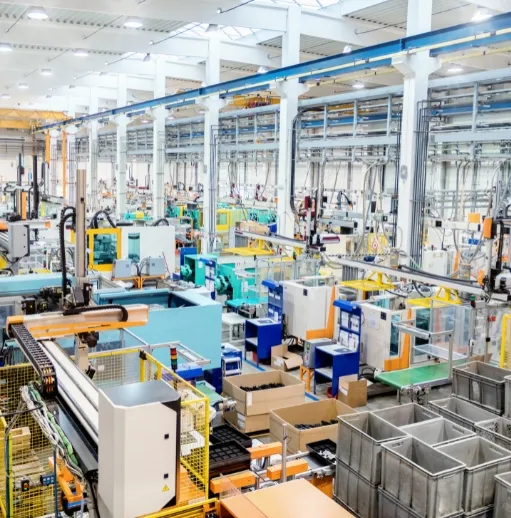
A lot has changed about the workplace, right down to the ways we talk about where, when, and how we work. The increasing popularity of different work models has even created a new vocabulary, which can lead to confusion. So, although many use “flexible” and “hybrid” to refer to the same arrangement, they are not the same. And the details matter. Implementing the work model that works best for your organization starts with carefully defining your terms.
What is hybrid work?
Hybrid work is where employees work across a combination of the office and their home. They’re still able to enjoy the benefits of remote work without missing out on the connection and collaboration of on-site, in-person work. The right balances deliver the best of both worlds.
Generally, employees on the hybrid work model keep a fixed schedule. For example, a payroll team may be designated to work from the office on Mondays, Wednesdays, and Fridays, while the HR team may be in the office Tuesdays and Thursdays. Because they’re never there on the same days, the two departments can share a single set of workstations and meeting rooms, cutting the collective floor plan footprint –including all associated costs — in half.
There are additional benefits. Many employees want a hybrid work model to help:
- Reduce commuting time and expenses
- Coordinate and cut costs for childcare
- Create a more dynamic weekly working environment
Organizations like the work model because it can help them with the overall employee experience, reducing turnover and making it easier to attract new employees. There’s often also the opportunity to save money. Having fewer employees in the office day to day reduces the need for dedicated desks. Companies can save on both furniture and square footage.
Workers don’t tend to see hybrid as a compromise between remote and in-person positions. In fact, many prefer it over being totally remote. According to Gallop, nine in 10 remote-capable employees prefer some remote work flexibility, and most of them prefer hybrid work.
But hybrid work is not without some challenges. First, the lack of flexibility in the arrangements may not best meet the needs of some employees. Some might not have a quiet, private home working environment, so would prefer to work from the office all week. Additionally, when different teams or team members aren’t necessarily in the office at the same time, it can be harder to coordinate times for collaboration. Going hybrid means having to be a bit more careful when scheduling.
What is flexible work?
Flexible work, on the other hand, is a less regimented, more fluid process. It’s like hybrid work in the sense that employees combine working from the office and working from home, but the most important difference is the level of control.
While it’s the employers who define and tracks hybrid working arrangements, in a flexible work model, employees have choices beyond just location. Within reason, each employee can decide where and when they want to work. And they don’t have to commit to the same week-by-week schedule. So, they can decide to work from the office whenever they want to, or whenever they feel they need to collaborate with co-workers in person.
Which working styles work best for you?
To understand which model makes more sense for your organization, there are a few key factors to consider.
Generally, a position can be hybrid or flexible when an employee can complete position-related tasks outside the office without:
- Adding excessive cost to the company
- Lowering the level of service or quality of the product
- Affecting overall team performance
But every business and every workforce is different, so what might work for some won’t work for all. With smaller companies, where the lines between roles and responsibilities are less clear, you might find that all the employees better match one style over the other. At workplaces, it makes more sense to look at each department. So, you could have the accounting department, mostly hybrid but the marketing department fully flexible. Depending on the context, though, it could be the other way around.
Consider the differences between a customer success representative and a writer in the marketing department. The rep might be able to work from anywhere, but they need to be available at specific times to support customers. For them, hybrid makes more sense.
The writer has deadlines they need to meet, but for tasks where they’re working alone, it doesn’t matter what time of day they complete them. Here, a flexible work schedule might be a better fit.
The need to connect with co-workers on your own team, co-workers on other teams, and whether virtual meetings are enough can all influence which style works best. And in many cases, these can be more specific to the person than the role. In fact, there are many people who like to come to the office for the sense of connection it gives them. Scheduled virtual meetings can be good for working on company projects together, but they lack the casual spontaneity of running into a work friend at the water cooler.
Hybrid, flexible, or fully remote work requires reliable, fast collaboration software
For all their differences, the hybrid work model and flexible work share an important fact: Their success depends on modern workplace and office management software.
When people aren’t coming to the office Monday through Friday, nine to five, they don’t need dedicated desks. Instead, companies can reduce their real estate footprint by offering hot desking and room booking solutions. Employees can book the workspaces they need in the office in advance for precisely the times they’re needed. And they can one another’s schedules and locations to easily organize physical, virtual, or combined meetings. And just like the employees it supports, the software is mobile, seamlessly synchronizing in the cloud across multiple hybrid environments through an intuitive app on any connected device.
Organizations can then leverage the captured data into actionable insights. They can use occupancy numbers and utilization rates to determine the best mix of individual and collaborative spaces, updating their floor plans to match trends and meet employee needs.


